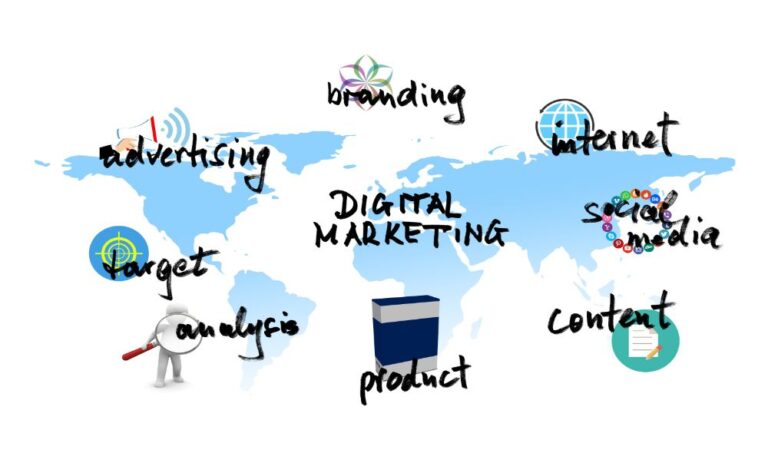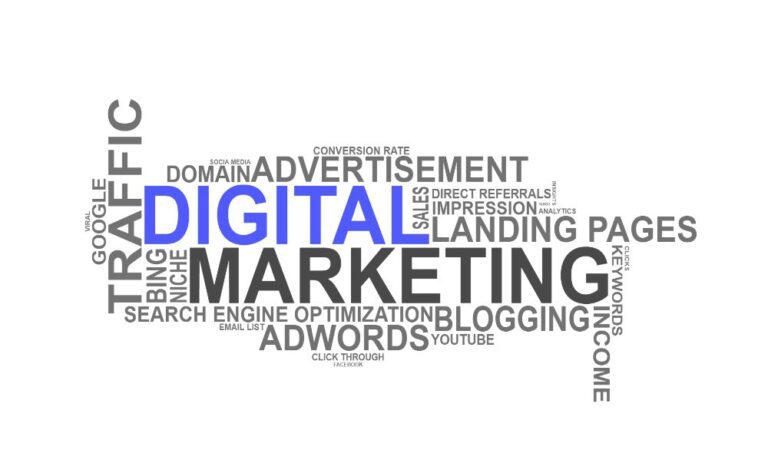7 Roadblocks to Digital Marketing Transformation
The progression toward a digital marketing transformation has been picking up speed for almost ten years now, but the pandemic pushed it along at a much more rapid clip than before. What is the result? The pool of available marketing talent has grown, the marketing mix is still undergoing change, and the matrix of available technology providers is constantly expanding.
Customers have completely embraced the practicality of consuming information and deciding what to purchase using mobile and smart devices. As a result, marketers are now dedicated to the creation of exceptional experiences for their customers across the board.
In addition to the requirement that they provide an exceptional experience for customers, marketers must also contend with the complexities of real-time marketing and guide brands through the openness and transparency that are inherent to social media.
For a business to achieve marketing success, it is necessary to demonstrate transparency, agility, and accountability at all levels. Additionally, there must be a commitment to consistently create exceptional customer experiences.
Challenges Facing the Transformation of Digital Marketing
The question at hand is no longer one of whether or not you will prioritize technological progress. Rather, I am interested in how you plan to implement digital transformation for your company.
Every obstacle regarding the implementation of digital transformation can be conquered. Understanding the obstacles that lie ahead and coming up with solutions to overcome them is a good way to get started in any endeavor.
Let’s take a look at seven of the most typical challenges that are faced by marketers today.
1) Accepting responsibility
The advancement of marketing technology has made it possible to measure everything. For marketers who have never been held accountable for marketing KPIs such as subscribers, leads, conversion rates, and sales, this can be a hard endeavor.
According to the findings of the 2021 CMO Survey (Open Link in a new window), there is growing need to demonstrate the value of marketing initiatives. 58.7% of marketing leaders have reported an increase in pressure from CEOs, while 45.1% have reported an increase in demand from CFOs. The majority of studies have found that quantitative tools are helpful in documenting the short-term impact of marketing spend; nevertheless, demonstrating the long-term impact is still mostly a matter of qualitative evaluation.
In order to successfully demonstrate the value of marketing on an ongoing basis to CEOs, CFOs, and the other members of the executive team, marketers need to establish strong analytical knowledge and capabilities.
2) Self-satisfaction
Let’s take a look at what happened over ten years ago. In 2013, MIT Sloan Management Review and Capgemini Consulting collaborated to conduct a survey on digital transformation to enable big business gains. The poll included responses from 1,559 executives and managers.
Despite the fact that seventy-eight percent of respondents indicated that digital transformation will be critical to their organizations within the next two years, sixty-three percent of respondents felt that the pace of change in their organizations was too slow. These findings were included in the report(Open Link in new window), which was produced as a result of the research. The “lack of urgency” was the challenge that was mentioned most frequently.
A quick jump ahead in time reveals that by the year 2021, the majority of us had experienced that “urgency” triggered by COVID and were compelled to switch to digital technology and processes. However, there are still those workers who have a hard time letting go of the methods and equipment that they are accustomed to using.
Ironically, success itself may be one of the primary factors that contributes to the development of cultures of complacency. Too frequently, those in charge of businesses allow themselves to become complacent with their past achievements and lack the ambition to make necessary changes. They believe that by continuing to do what they have always done, they will be able to preserve their market share, continue to grow their income, and keep a profit.
But the digital transition has the potential to completely upend entire industries and make market leaders irrelevant, as everyone of us has seen firsthand. Even if people don’t see the negative impacts of complacency in the short term, they could end up paying the highest price for it in the long run.
3) The Culture of Conservatives
In the field of information technology, there is a well-known proverb that states, “Nobody was ever fired for buying IBM.” The reasoning for this decision is that IBM is a reliable option because it is a well-known company. IT departments have been conditioned to avoid taking risks and stick with the status quo. This is despite the fact that younger and sometimes more inventive companies may come along with better services and products.
The same line of reasoning can be used to marketing in the modern era: “Nobody was ever fired for placing an ad.” It is well knowledge that traditional marketing strategies include things like advertising, direct mail, trade exhibitions, and telemarketing. The potential payoff is low, but so is the risk that could be taken.
Taking calculated risks can provide a significant competitive edge.
Marketers in the modern day are constantly putting new technology and methods to the test. Even while there is a greater possibility of failing, there are also more opportunities for learning in the real world. The capacity to get insight into what went wrong and the ability to make modifications that increase performance are both provided by analytics tools to marketers.
While traditional businesses choose to remain on the sidelines, modern marketers are seizing market share by putting marketing automation and artificial intelligence initiatives into action.
Businesses that are both too sluggish to adapt to changing conditions and too hesitant to take risks will ultimately come out on the losing end. It is possible to reform conservative cultures, but this transformation must begin at the very top. It is the responsibility of leaders to provide the resources and the runway necessary to achieve what is conceivable.
It is impossible to achieve success overnight, thus patience and perseverance are absolutely necessary.
4) A deficit in both expertise and ability
In a recent survey conducted by McKinsey Global(Open Link in new window), 87 percent of executives stated that they were currently experiencing skill gaps in the workforce or that they expected to experience them within the next few years.
Your company will suffer as a direct result of the shortage of marketing personnel. Because of this, the ability of your organization to implement new techniques and approaches may be hindered, despite the fact that the industry is always evolving.
You should make an effort to find powerful leaders who can plan forward. The results of a poll conducted by McKinsey showed that approximately 70 percent of respondents agreed that hiring leaders who are proficient in digital technologies has a significant influence. When new leaders who were conversant with digital technology joined the management team, they went through a period of digital transformation.
In order to progress, you will need to recruit a new kind of marketer, establish internal academies to advance the marketing team you already have, and investigate the possibility of outsourcing marketing tasks to organizations that bring complementary knowledge and abilities to the table.
5) Rivalries for power and political intrigue
One of the sad aspects of doing business is being involved in power battles and politics. The pursuit of one’s own ego and self-interests might present difficulties.
If the individuals who are in charge of determining the pace of change within the company lack confidence in their abilities to steer the digital marketing transformation, then it is possible that they will obstruct progress, either consciously or subconsciously, in order to maintain control and power.
If you get the impression that some individuals or departments are holding back progress, you should make an effort to learn which aspects of the process drive and scare those individuals or departments. Make use of this information to develop a more strategic approach to managing change, one that builds buy-in at each stage of the process.
6) Silos
Subscribers, fans, followers, leads, and consumers all have the ability to select when and when they engage with your brand. They make no distinction between the various marketing departments and distribution methods.
Consider all of the potential points of interaction with customers (Open Link in new window).
People can connect with you via giving you a call, filling out a web form, starting an online chat, searching the web, downloading content, attending a webinar, subscribing to a blog, and/or connecting on social networks. It’s conceivable that their wants and goals will shift throughout the course of each contact. They are entering new stages in their relationship with your brand, yet they still anticipate having a consistent experience as a customer.
Imagine how many different departments and employees in your firm have an impact on the customer experience for each of the scenarios described above.
The stakes are quite high as a result of digital transformation and the transition to inbound marketing. The marketing department needs to break through its own internal silos (advertising, communications, content, digital, PR, SEO, social, web).
Find new and creative ways to work together with customer service, finance, human resources, information technology, operations, and sales in order to boost performance and produce consistently amazing experiences for customers.
7) Technology and System Fatigue Caused by Legacy Infrastructures
The marketing technology matrix is quite extensive and is growing at a rate that is exponential. There are 8,000 different types of marketing technology, as stated in Scott Brinker’s “Marketing Technology Landscape Supergraphic” for the year 2020 (Open Link in a new window). Since 2011, this landscape has seen an increase of 5,233% in size.
It can be very taxing to keep up with the newest and most advanced equipment. Even though there are probably more efficient ways to perform virtually every marketing function, from customer relationship management to website content management, large enterprises already have legacy solutions in place, and small and midsize businesses (SMBs) face challenges with their budgets and their human resources.
It takes time, money, unwavering support from top leadership, and an internal advocate who is prepared to wade through the politics and power struggles necessary to propel the company forward in order for change to occur.
Companies that do well are ones that are ready to adapt to constant change. They established agile marketing teams and business processes that are able to scale and adapt when new opportunities and technology emerge.
Get out of your rut and try something new.
Businesses and professionals who are nimble, dynamic, and transparent have the opportunity to redefine sectors, displace industry leaders, and disrupt markets.
The people who are willing to step outside of their comfort zones, let go of their worries and concerns, establish extraordinary personal and professional brands, and become the leaders of the future generation will be the ones who are successful.







